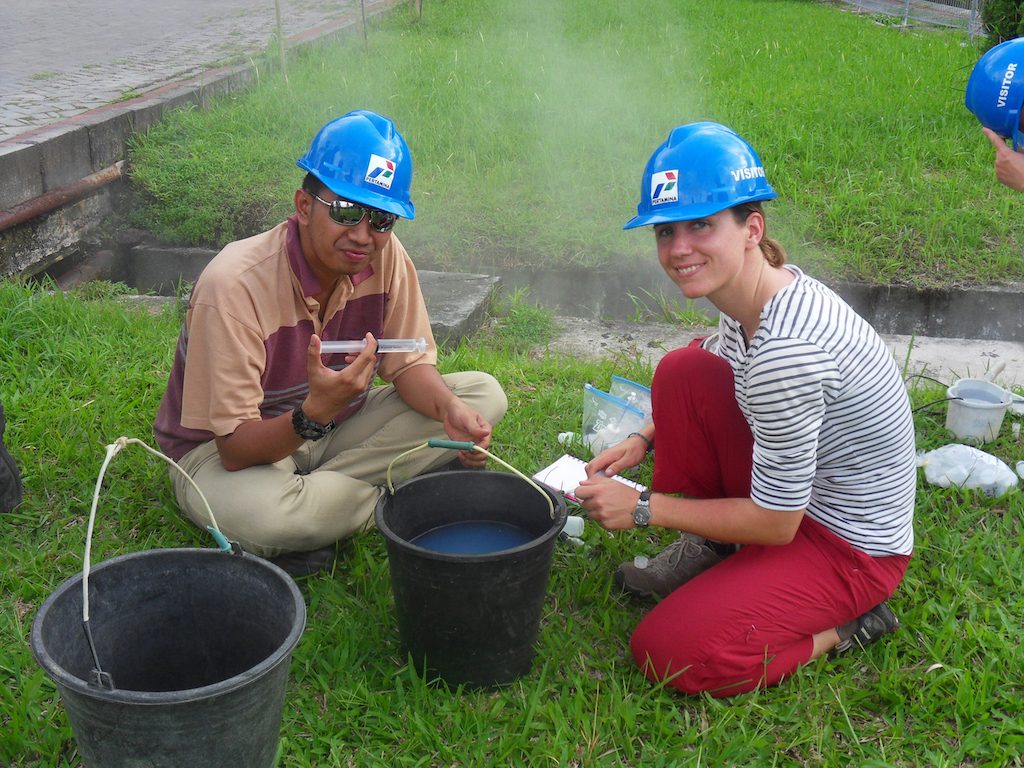New exploration method to localise potential drilling sites for geothermal energy development
Researchers by the German Research Center for Geosciences (GFZ) in Potsdam introduce a new method for exploration and the localization of interesting potential drilling sites that are covered by water.
In a release this week, the Helmholtz Center Potsdam GFZ German Research Center for Geosciences shared details on a new exploration method for geothermal energy development.
Where to drill? That is the central question in the search for underground energy resources, for example for geothermal energy. Water in rocks flows along permeable paths, which are the main targets for geothermal drilling. A research team with the participation of the GFZ Potsdam presents a new method for the localization of interesting potential drilling sites, which are covered by water. It combines the mapping of underwater structures with geochemical measurements. Water in rocks flows along permeable paths, which are the main targets for geothermal drilling. Borehole, drill core and micro-earthquake data indicate that the paths are spatially interconnected, permeable structures, such as fractures or other disturbances in the rock. However, with currently available techniques for localizing these structures, their geothermal potential can not be fully exploited
A research team headed by Maren Brehme, a research associate at the German Research Center for Geosciences GFZ until August 2019 and now Assistant Professor at the TU Delft, is presenting a new method for locating interesting potential drilling sites that are covered by water. “With our method, it will be possible in the future to better map geological structures under water and make a statement about the inflow from surrounding strata,” says Maren Brehme.
Since geothermal fields are often located in volcanic areas, they often occur at or below crater lakes. “However, these lakes hide important structures for geothermal energy,” explains Maren Brehme. “In the study, we have shown that volcanic lakes, such as the lineage we studied in Indonesia, have so-called ‘sweetspots’, deep holes with fluid from the surrounding rock.” However, the method is not limited to volcanic lakes, but can be be applied to other areas under water.
Novel combination of two technologies brings success
The new approach combines bathymetry measurements with geochemical profiles. The bathymetry (from the Greek bathys “deep” and métron “measure”) is used in this case for the mapping of fault zones and geyser-like holes in the seabed. Their most important tool is the echo sounder. The geochemical profiles of temperature, salinity, density, and pH data at different depths show in which area of ??the lake inflows from the surrounding geothermal reservoir occur. The combination allows the distinction between permeable and non-permeable structures, which was previously not possible. With the method, promising locations for drilling can be localized more accurately.
The field work on which the study was based took place in 2018 during an expedition to the Linausee led by Maren Brehme at the GFZ. The field work is in the context of the long-standing GFZ cooperation with Indonesian partners, which was funded by the Federal Ministry of Education and Research. The Linausee is located only a few kilometers from the Lahendong site, where in 2017 the GFZ and Indonesian partners jointly developed the first low-temperature geothermal demonstration power plant in Indonesia.
Source: GFZ Press Release via IDW Online


















